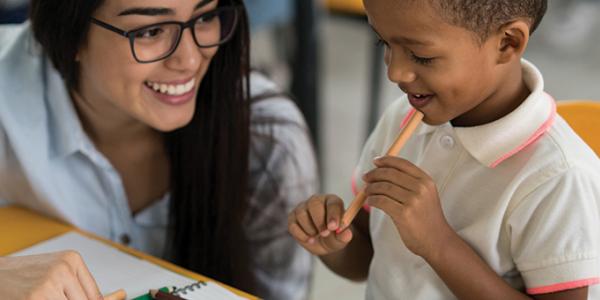Excerpt from Spotlight on Young Children: Observation and Assessment

Introduction
by Shannon Riley-Ayers
Educators who understand the process and benefits of collecting information on what children know and can do and then using it to guide instruction and promote children’s learning—known as formative assessment—embrace it.
Formative assessment is a critical piece of a balanced, comprehensive system of assessment for young children that also includes screening, diagnostic tests, and summative assessments (Riley-Ayers 2014). It occurs over time in varied situations and through natural observation and documentation in authentic contexts, like a teacher writing an anecdotal note about a toddler’s discovery of different textures while playing with materials in the art area. Formative assessment often involves work samples or products that children generate or create, like a second grader’s poem or a preschooler’s painting. It is the most appropriate assessment approach for young children because their development is highly complex, dynamic, and often erratic and uneven (Ackerman & Coley 2012), which makes it difficult to capture learning through one-time assessments that provide only a snapshot of a child in a particular moment. Formative assessment can also shed light on those areas of a child’s development—such as social and emotional skills and approaches to learning—that other types of assessment often overlook.
What Formative Assessment Isn’t—and Is
Formative assessment provides a process for teachers to gather evidence of children's learning and to make instructional decisions. This type of assessment
-
Is not standardized, with a one-size-fits-all model. While it is systematic in that it has a fixed plan and structure, it is individualized, flexible to meet the context, and comprehensive. It considers every aspect of a child’s learning and development, not just her academic understandings.
-
Is not simply the act of collecting information. It is the collection and use of the information to inform instruction, plan interactions that scaffold learning, and communicate children’s progress to them, their families, and others.
-
Is not punitive. It acknowledges individual learning and a range of development trajectories. It values where children are, what they bring to the learning environment, and where they are ready to go next. It is a strengths-based approach that allows successes to be celebrated and used as building blocks for further development and learning.
-
Does not take time away from learning and exploring. Rather, it embraces play and exploration; since children demonstrate stronger skills through play (Hirsh-Pasek et al. 2009) and play enhances their learning (Ilgaz et al. 2018), teachers get a more complete picture of a child’s knowledge and abilities with formative assessment. Teaching is assessment, and assessment is teaching—they are not separate acts.
-
Is not intended to be used to make high-stakes decisions about a child or teacher. While results from formative assessments can provide insight into such decision making as part of a comprehensive approach, the data they provide are not intended to be used alone.
From Spotlight on Young Children: Observation and Assessment, edited by H. Bohart & R. Procopio. Copyright © 2018 by the National Association for the Education of Young Children.
Learn more about this book
Resources
Recommendations
For Authors & Photographers
Catalog
Webinars
NAEYC Books List
